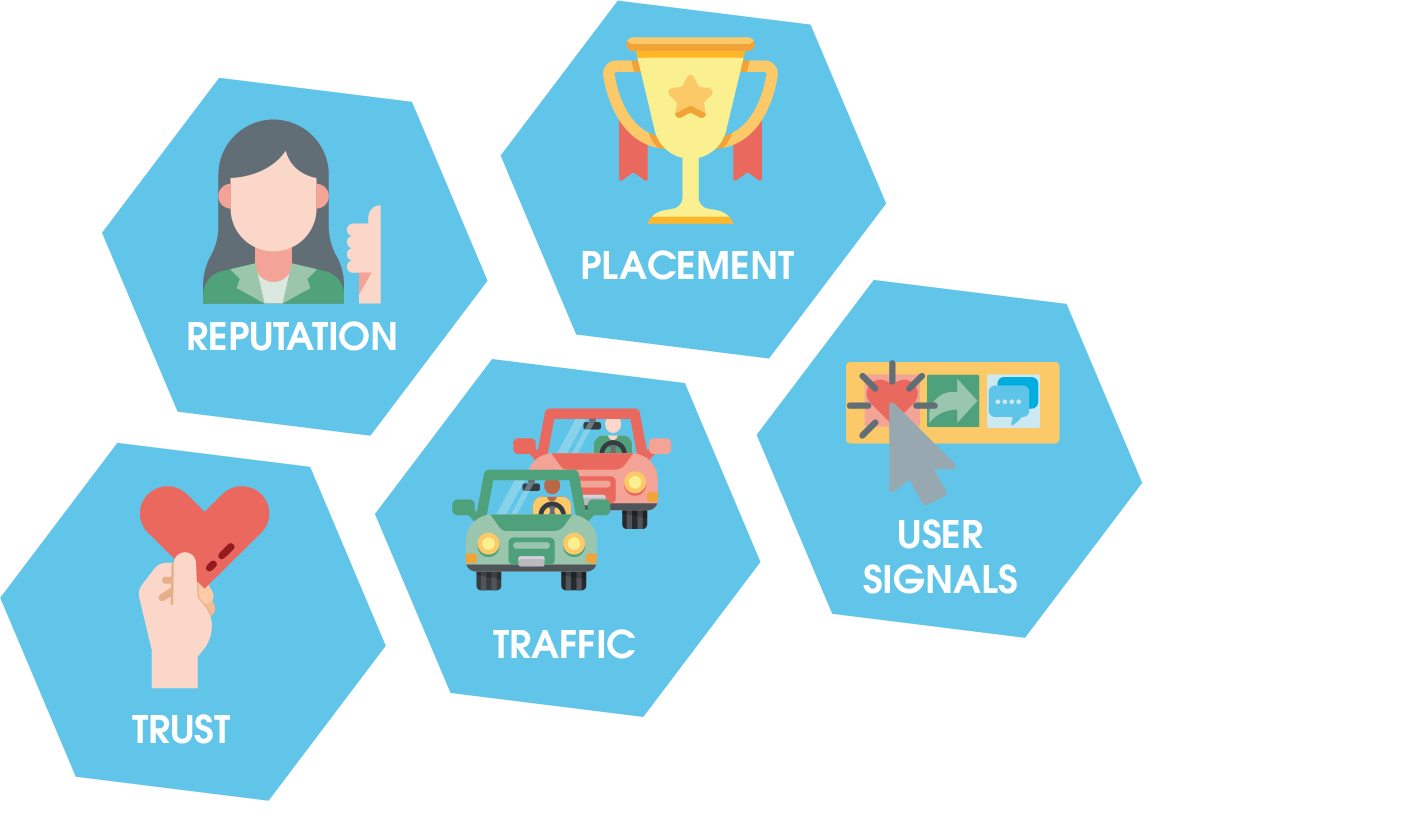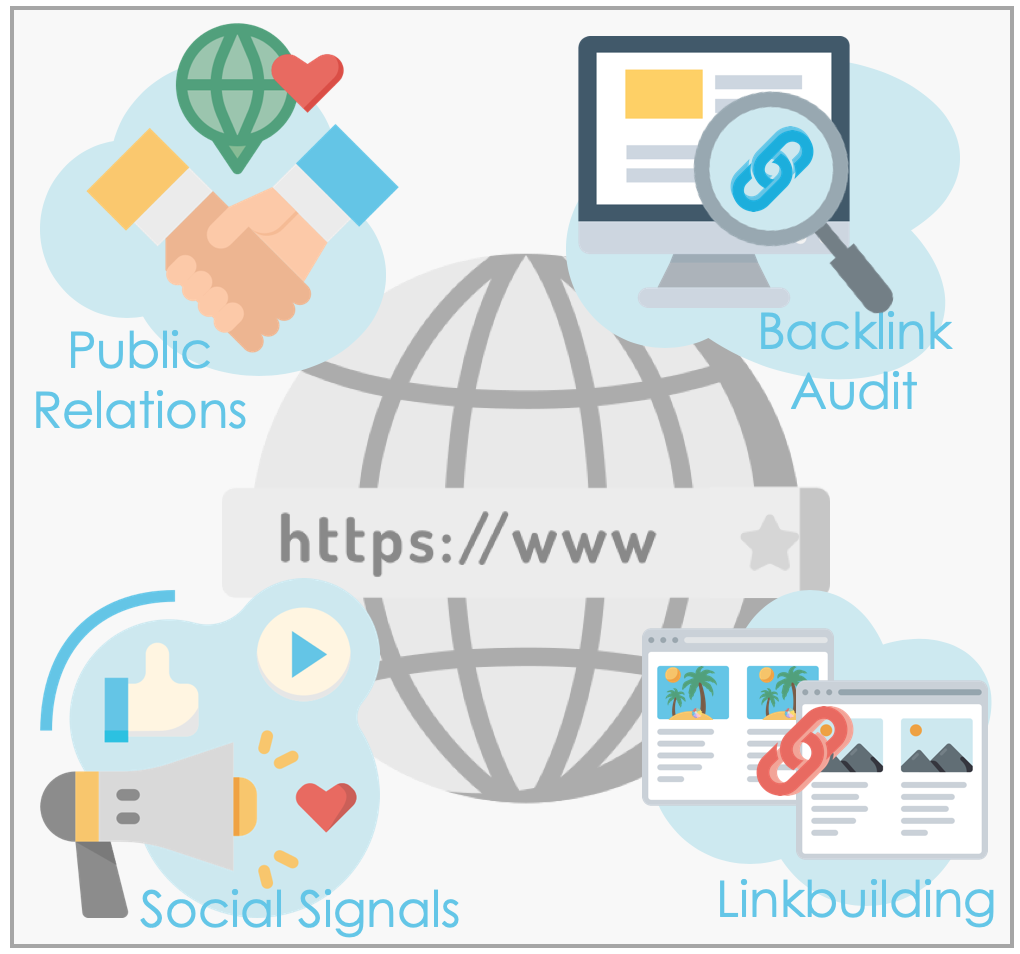
Get tips and tricks to get the most out of your Google reviews. Learn why they are so important, how to deal with negative reviews and how to get more reviews! ... Continue reading
| 18 min |


| 15 min |
In order to become more visible on the web, you can not only optimize your own page, but also adjust various settings outside it. As part of search engine optimization, so-called OffPage optimization measures help you to do this. Through a corresponding backlink audit, i.e. an analysis of the links pointing to your page, you can recognize your status quo. So you can see which methods are best for you. In the following, we will explain step by step how you can improve your rankings throughOffPage optimization.
What is OffPage optimization and why is it important?
What are the goals of off-page optimization?
What basis do you need for the success of your OffPage optimization?
What are the elements of an OffPage optimization?
What measures can be taken in an OffPage optimization?
What are the dangers and limitations of OffPage optimization?
Which tools help with an OffPage optimization?
In summary: What are the advantages of OffPage optimization?
OffPage optimization is the second component of search engine optimization (SEO) – next toOnPage optimization. If you have managed to successfully implement theOnPage optimization, it is important to bring the OffPage area up to full speed. Therefore, we take a look at the external influences on a website. The biggest factor here is clearly backlink building. Backlinks are external links that are generated either organically, i.e. all by themselves, or through skilful link building. These tactics pursue one strategy above all: building online reputation and increasing one’s own site authority. By building links to your site, positive signals can be sent to Google. However, this is only the case if the links are placed on a high quality site. Low quality sites send negative signals as a logical consequence. It is a kind of recommendation that other sites give to yours. Meanwhile, not only backlinks count as reputation, but also social signals. This means that every mention, like, and share is correlated with ranking, even if they are not an official ranking factor.

No matter what and how you optimize, the ultimate goal is always top rankings in the organic search results – at best, of course, number 1. Unlike OnPage optimization, however, theOffPage area can not be influenced as much. Above all, however, an interaction of both parts leads to ideal results and thereupon to success. Another goal is to improve and strengthen the online reputation of the website. This can contribute for example by measures to the following increase:
At the same time, this has the positive side effect of increasing both the trust and the traffic of the site. Nevertheless, this only happens if the corresponding link is also clicked. Therefore, the place of placement and the link or anchor text on the link-giving page is important. The more prominent and higher up on the page and the more interesting the link text, the better. Therefore, users will click oftener and the linkjuice of the link-giving page is passed on. This is also whereOnPage optimization comes into play again. If done well, it ensures that your website visitors like to stay there. This in turn sends positive user signals to Google and again influences the ranking.
The basis ofOffPage is first and foremost a successfulOnPage optimization. Through this, you manage to make your content appealing and link-worthy. The given added value encourages users to gladly share it and thus increases the popularity of the content.
Additionally, it is extremely helpful to make contacts. In fact, by having a good network of other site owners, you can save yourself a lot of work when it comes to placing links or distributing your content.
Most elements of theOnPage optimization are, unlike in theOnPage area, not influenceable by yourself. However, this does not mean that you cannot influence anything. However, there are some elements that you can control in order to improve your authority and popularity.

The goal is clear: generate high-quality backlinks. That means building links that point from another website to your own. The background of the whole thing is that the cross-references are a reference of relevant content for search engines. This thus signals high-quality content that answers search queries optimally and that other users are happy to share and link to. All in all, this can have an impact on your page’s ranking.
When it comes to link building, there are various tactics that go down differently well with search engine crawlers. For example, invisible links that are created by having the text and background the same color are not good. Also, undesirable are cloaking, link farms and other black hat link building methods. Therefore, these usually lead to penalties on the part of the search engine, instead of an improvement. In addition to black hat link building, there is also grey hat and white hat link building. Especially the latter combines the optimal measures to send positive signals to Google and Co. Through these methods, you can get linkjuice from the linking site, which is composed of the distribution of backlinks within the website and the reputation of these links. You support the organic backlink building by establishing contacts to other webmasters, who fit thematically to your website. Furthermore, you can not only build links via guest posts, but also show your expertise. Tools such as reverse image search or Google Alerts can be very helpful here.
→ Learn more about this in our article on link building.
But watch out: Not all backlinks are the same! You should therefore not accept every link just to be linked. Be sure to look for high-quality and thematically appropriate pages.
You need a link audit if you want to take a closer look at your backlink profile. It is important to identify and disable harmful links, otherwise they can lead to penalties and worsen your ranking. The link audit consists of 4 simple steps:
“Signals”, i.e. likes, shares and comments that point to your website from social networks, are called social signals. These are not only interactions in the popular media, such as Facebook, Instagram, Twitter, etc., but also comments on blogs, reviews of articles and similar. The exact influence of social signals on the ranking is not known. On the basis of several studies, it is nevertheless assumed that there is a certain correlation between social signals and the ranking of a page. Google additionally keeps dropping allusions and hints that social signals have a positive effect. However, they are not listed as a separate ranking factor. Even if there is ultimately no official confirmation, it is clear that a presence in social media brings a positive effect for your company. It can once again attract users to your site and increase organic traffic. It also increases user engagement and the attention your website receives.
Similar to social signals, PR and brand management has only an indirect impact on theOffPage optimization of your site. If you have already made a name for yourself with your brand or present yourself strongly on the web, it will be easier for you to achieve good positions for brand-related search queries in the SERPs. If you want your site to get a top ranking in generic search queries, you need a perfectly optimized landing page with high-quality content and a good user experience. The digital reputation of your website is thus a decisive factor inOffPage optimization.
There are four different measures you can work with OffPage.
However, search engines are very critical of link purchases. Therefore, you have to make sure that the linking site is relevant to the topic, reputable, of high quality and, above all, not a link buying network. Links should be natural and appropriate.
The situation is similar with link exchanges. This is also considered more of a grey hat link building method and should therefore be treated with caution. What you should avoid at all costs are link exchange programs.
Both measures should not be used in abundance and in any case, when choosing your link partners or the parnter site operator, class is more important than mass!
Link bait focuses on voluntary linking of content and has the main task of promoting it. This in turn means that links are generated completely naturally. You can simplify the whole measure if you stick to the following:
There are several content types that are particularly well-suited for link-baits. Sweepstakes, infographics, top rankings and the like always encourage sharing and make the process easier.
Link acquisition is ultimately the key point, which in principle includes all the methods already mentioned. However, you can resort to many more measures for link acquisition. For example, it is helpful to contact webmasters directly, either by phone or e-mail, to talk to them about your topic and your site. Of course, the first step is to find suitable link sources and their owners. You have to consider the following:
There are some tools that make it easier for you to find the right partners. You can find out more about them in our article on link building tools.
Google and other search engines have always been at war with link spam and unnatural link building. Through various updates, they are therefore trying to “train” or improve their algorithm so that manipulations can be better detected and combated. This is where you directly encounter the greatest danger: unforeseen updates. At the same time, the updates also define your limits, as some measures are simply penalized and thus have no positive effect on your website. Artificial linking is often noticed by search engines. Therefore, try to maintain a natural link profile to send the right signals to Google and Co.
Similar toOnPage optimization, there are alsoOffPage tools that can make optimization easier for you. In the following, we will introduce you to the most helpful ones, from our point of view.
You can upgrade MOZ Link Explorer, Ahrefs and Majestics SEO Tool to access additional functions. However, this will make these tools subject to a fee.
Which tool you want to choose exactly and whether you want to have a free or paid version is, of course, completely up to you.
As you already know,OffPage optimization has several advantages. Here you get all possible effects on your page collected and at a glance.
Want to learn more tools that can help you in link marketing?

